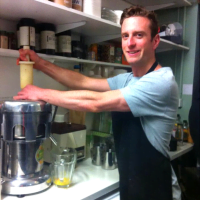When it comes to feeding tubes, blended food is an excellent option for long-term use. Preparing blended food can be a challenging task, but it is worth the effort for those who rely on it for their daily nutrition. In this blog post, we will discuss the process of creating blended food for tube feeding, including how to prepare and store it properly. Whether you are a caregiver or a patient, this guide will offer valuable insights that will help you optimize the health and well-being of those in need.
Choose the Right Equipment
The first step in making blended food for tube feeding is to select the right equipment. A high-quality blender or food processor is crucial to ensure that the food is blended correctly and evenly. The ideal blenders for tube feeding are those that have several speed settings, as well as a pulse function. These features allow you to blend the food to your desired consistency.
Choose High-Quality Ingredients
Once you have your equipment, it is time to choose the right ingredients. Always opt for high-quality, fresh ingredients, as well as lean proteins and plenty of vegetables. You can also include healthy fats, such as olive oil or coconut oil, to make the food more nutritious.
Prepare the Food
To prepare the food, start by washing and chopping the ingredients into small pieces. Then, add them to the blender in small batches, blending each batch until it is smooth. Be sure to add water or broth to the blender as needed to achieve the desired consistency.
Storage and Handling
Once the blended food is ready, it is important to handle and store it correctly. Transfer the food to a clean, airtight container, and label it with the date and contents. Store it in the refrigerator or freezer, depending on how long it will be used for. Generally, blended food can be stored in the refrigerator for up to 48 hours or in the freezer for up to 3 months. When storing in the freezer, be sure to use freezer-safe containers or freezer bags.
Adjusting the Consistency
Finally, it is essential to adjust the consistency based on the patient’s needs. For patients who require a thicker consistency, such as those with dysphagia, you can add a commercially available thickening agent or blend in vegetables that have a high starch content, such as potatoes or sweet potatoes. For patients who require a thinner consistency, you can add additional water or broth as needed.
Conclusion
Blended food for tube feeding offers a great alternative to traditional feeding methods for those who require it. With the right equipment, high-quality ingredients, and proper preparation and storage, blended food can be a nutritious and delicious option for long-term use. By following the recommendations provided in this blog post, you can prepare and store blended food with confidence, knowing that you are providing optimal nutrition and care for those in need.

